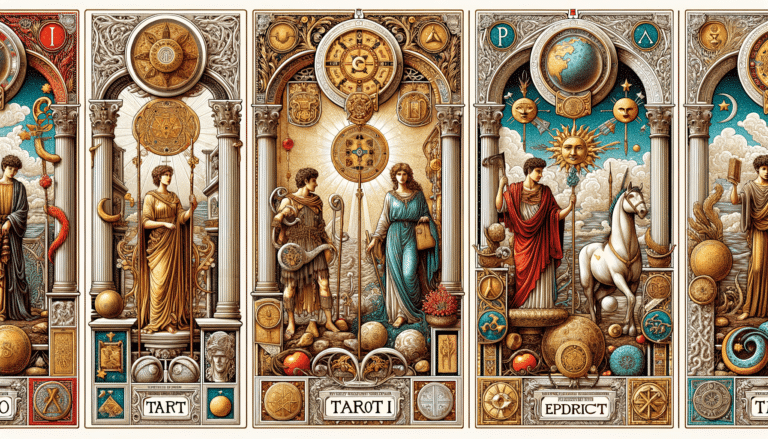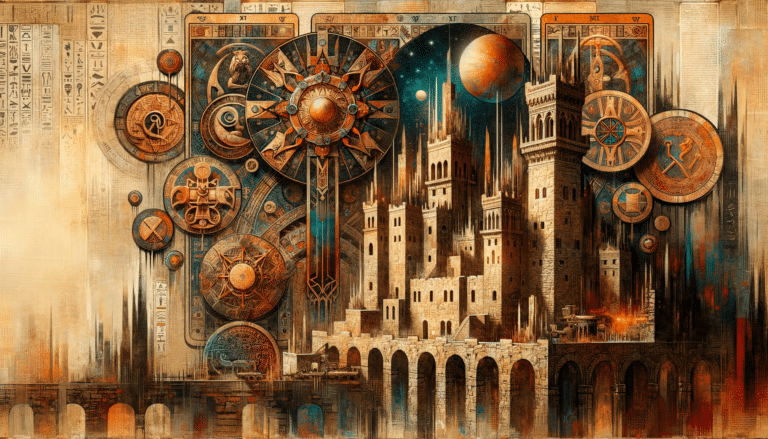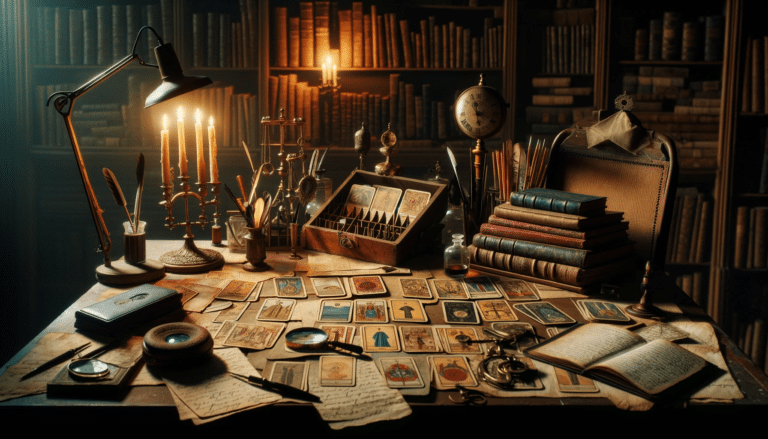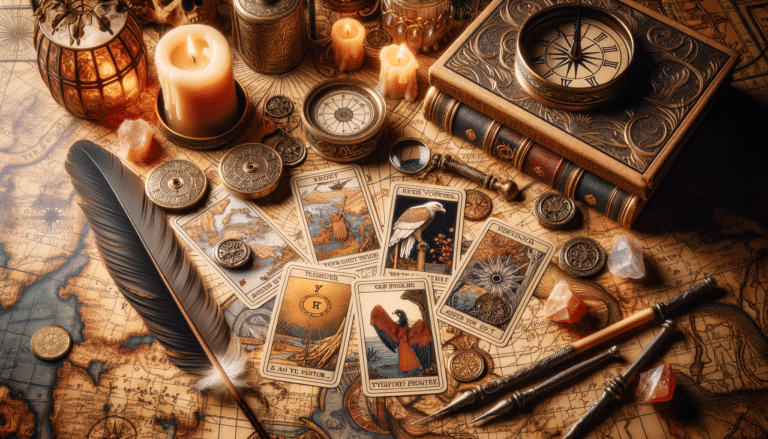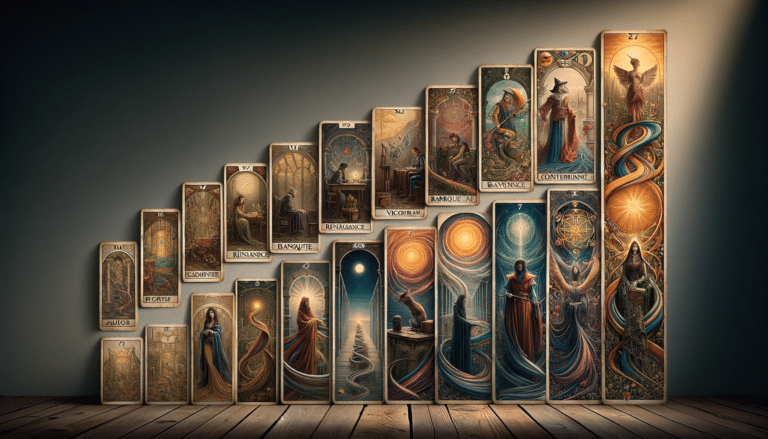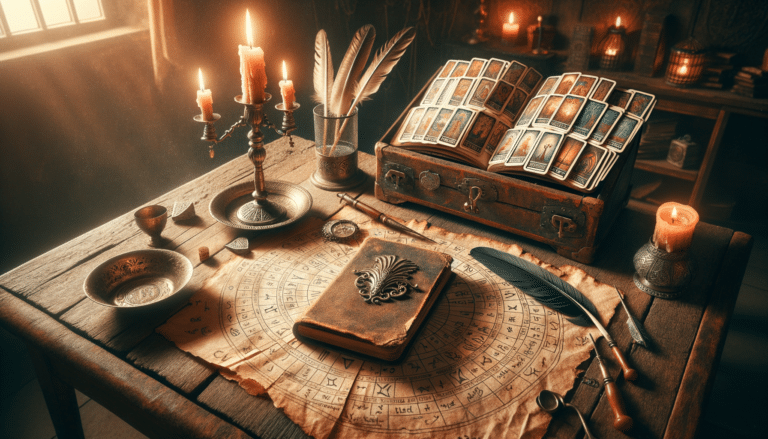12 Insights into the Transition of Tarot Through Centuries
From shrouded beginnings to mystical revivals, you’ve likely heard tales of tarot’s enigmatic journey through time. If you’re curious about how these storied cards have evolved from simple playing pieces to profound tools for divination, you’re in the right place.
This guide offers you 12 insightful tips to help you unravel the rich tapestry of tarot’s history. You’ll explore the cards’ medieval symbolism, their transformation during the Renaissance, and their migration across Europe. You’ll also discover how war, peace, and the digital age have each left their mark on the tarot tradition.
As you delve into these pages, you’ll gain a deeper understanding of tarot’s multifaceted past, the transition of tarot through centuries, and how it continues to shape its role in contemporary culture.
So, ready your deck and let’s embark on a journey through centuries of tarot’s transformative tale.
Key Takeaways
- Tarot cards have evolved over centuries, starting from Mamluk playing cards and progressing through Italian and French influences, the Renaissance, and the Rider-Waite-Smith deck.
- The evolution of tarot includes the incorporation of allegorical illustrations, the influence of cultural and mystical traditions, the adoption of occult associations, and the infusion of personal symbolism and storytelling by artists.
- Tarot has transformed from a game to a tool for divination, offering solace and guidance during times of chaos and war.
- The digital age has revolutionized tarot’s accessibility and diversity, with virtual readings, online communities, themed decks, and inclusive representations.
Origins of Early Tarot Cards
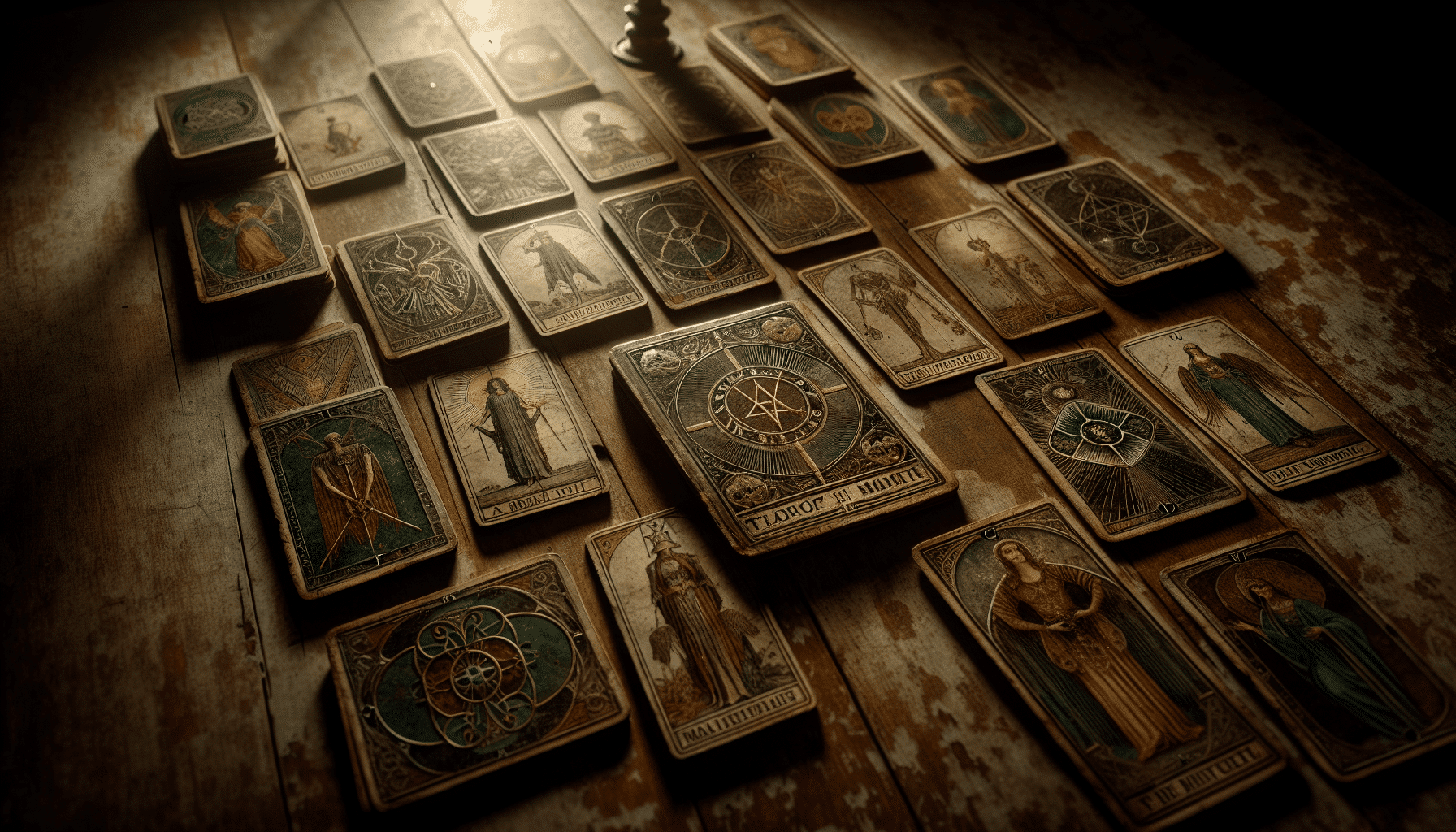
You’ll uncover the roots of early tarot cards in the intricate tapestry of late medieval European history. These cards weren’t initially created for the mystical purposes you might associate with them today. Rather, they were playing cards, and their journey began with Mamluk origins.
The Mamluk cards, hailing from the Islamic societies of the Middle East, found their way into Europe through trade and conquest, laying the foundation for the tarot’s ancestors.
As these exotic cards spread, Italian suits emerged, adapting Mamluk motifs into more familiar European iconography. In the 15th century, Italian nobility were particularly taken with these cards, commissioning lavish hand-painted decks that often included additional cards, today known as the Major Arcana. These extra cards featured allegorical illustrations, and it’s here that you’ll find the first whispers of tarot’s future as a tool for divination.
Dive into the period’s cultural exchanges, and you’ll see how the Italian suits, cups, coins, swords, and batons, mirrored the Mamluk’s cups, coins, swords, and polo-sticks. Recognizing these connections isn’t just intriguing – it’s a bridge to understanding how tarot cards morphed from courtly entertainment into the symbolic powerhouse they’re today.
Medieval Tarot and Symbolism
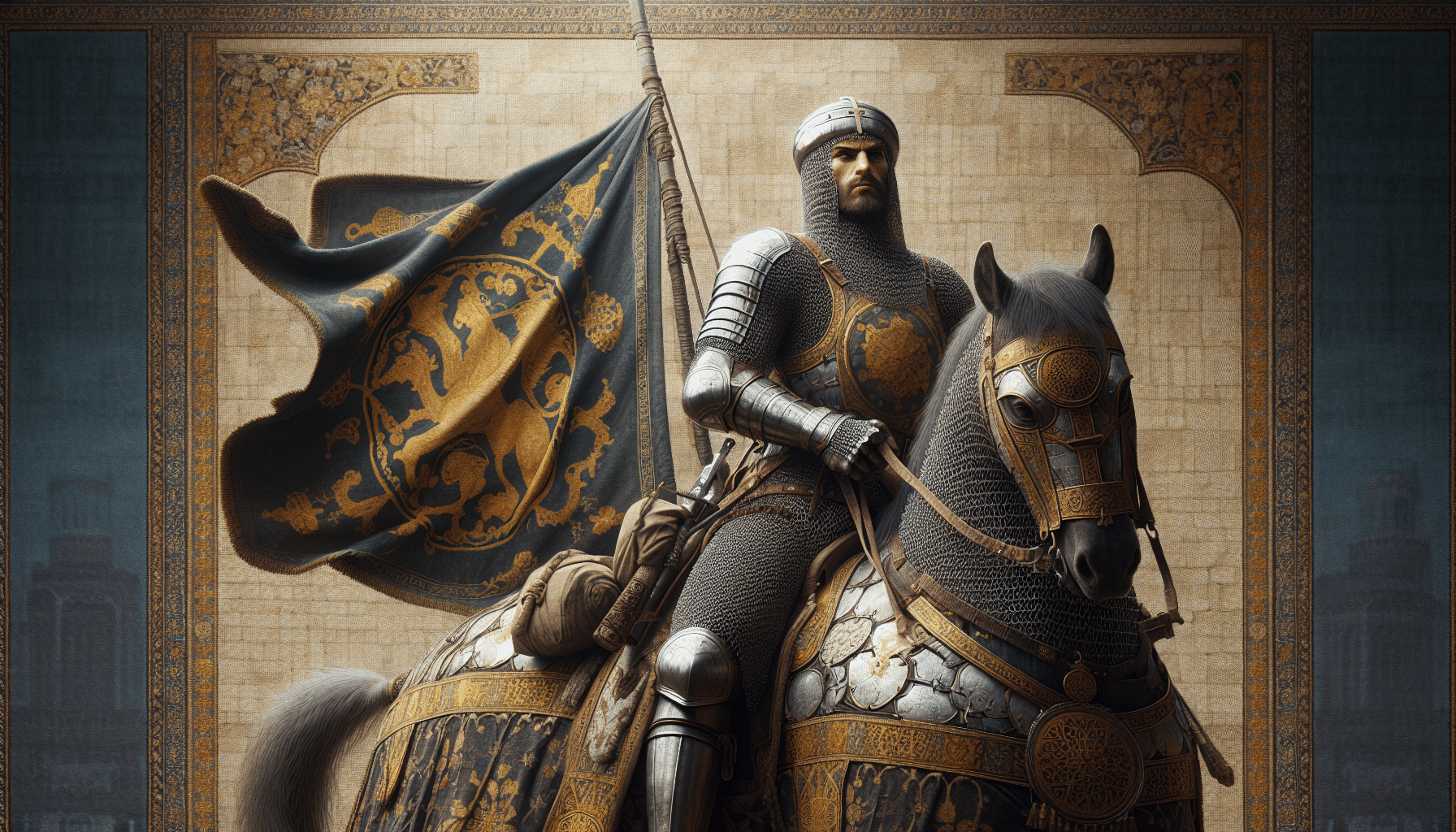
As you explore the medieval chapter of tarot’s history, you’ll uncover the roots of the symbols that remain potent today.
You’ll see how the tarot’s journey through the medieval era enriched its allegorical imagery, reflecting the period’s complex social and spiritual fabric.
Each card’s evolution tells a story of cultural shifts and the human psyche’s enduring mysteries.
Origin of Symbols
Delve into the medieval roots of tarot, and you’ll uncover a rich tapestry of symbols that have evolved from various cultural and mystical traditions. The symbolic roots of tarot imagery are deeply intertwined with the cultural adaptation of iconography from the medieval era, reflecting a complex narrative of beliefs and practices.
Here’s a glimpse into the origin of some key symbols:
| Symbol | Origin |
|---|---|
| The Fool | Represents freedom and beginnings, possibly drawing from court jesters or traveling entertainers |
| The Chariot | Symbolizes victory and control; linked to historical depictions of warriors or heroes |
| The Tower | Conveys upheaval, likely inspired by the Tower of Babel or similar structures in folklore |
| The Lovers | Embodies choice and relationships, echoing Adam and Eve or classical tales of love |
Understanding these origins enhances your appreciation of tarot’s rich history and symbolic language.
Tarot’s Medieval Journey
Moving beyond the origin of symbols, let’s explore how tarot’s imagery and significance progressed through the medieval period. During this era, tarot cards weren’t just for divination; they mirrored medieval morality and served as court entertainment.
Medieval Morality
- Virtues and Vices: The imagery often reflected societal values, with cards representing virtues and vices.
-
Moral Lessons: They were used as tools for teaching and reinforcing moral lessons.
Court Entertainment
- Games and Puzzles: Nobles used tarot in various games and puzzles, enjoying the rich allegorical illustrations.
- Storytelling: The cards provided a framework for storytelling, which was a popular form of court amusement.
You’ve got to appreciate how tarot decks encapsulated complex medieval life, embedding religious and moral allegories into what became a sophisticated form of entertainment.
Allegorical Imagery Evolution
While you’ve seen how tarot cards functioned as moral compasses and courtly distractions, it’s crucial to understand how their allegorical imagery evolved during the medieval period. The cards weren’t just for play; each image held deep symbolic interpretation, reflecting the societal, religious, and ethical values of the time.
The Fool, for example, wasn’t a mere jester but represented the human soul’s journey, full of potential yet prone to folly.
As you explore these medieval roots, you’ll notice modern parallels in today’s decks. The rich tapestry of symbols has been adapted but retains echoes of its origins.
Understanding this evolution helps you grasp the layered meanings behind each card, enhancing your readings and appreciation of the tarot’s intricate artistry.
Check out our Tarot Decks here…
Renaissance Influence on Tarot
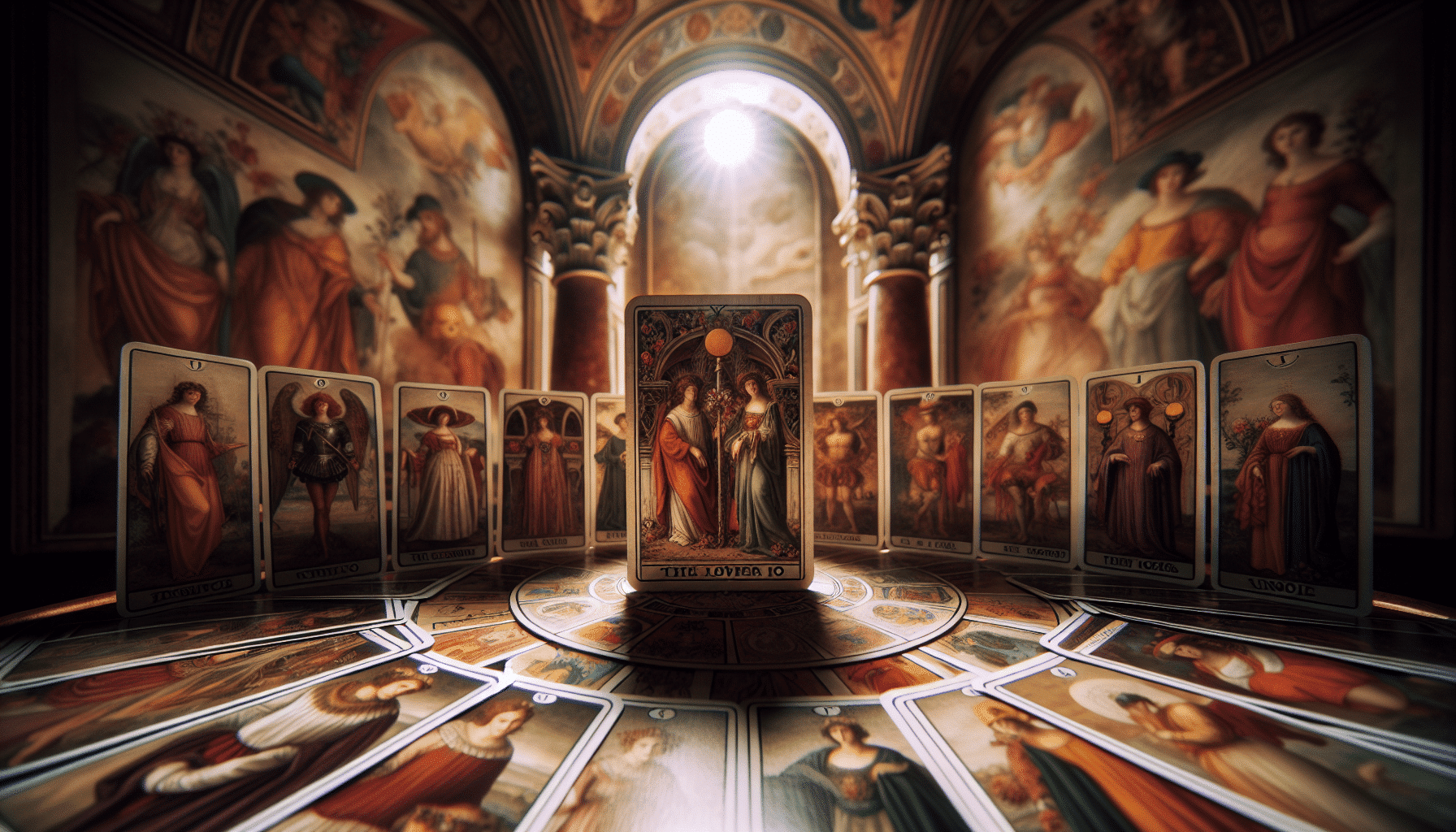
As you explore the Renaissance’s impact on tarot, you’ll notice a distinct shift in iconography that reflects the era’s artistic awakening.
You’ll see how tarot decks began to embody occult associations, a stark contrast to earlier interpretations.
Moreover, you’ll appreciate the evolution of artistic styles that gave the cards a new visual language during this period.
Iconography Shifts
Iconography in tarot decks underwent significant changes during the Renaissance, as artists incorporated contemporary symbolism and allegory into the cards. This period sparked a card reimagining that’s echoed in modern interpretations. You’ll notice this in several ways:
- Renaissance Artistic Elements:
- Use of perspective and anatomy for more lifelike figures
-
Richer narratives through symbols from mythology and religion
-
Impact on Modern Tarot:
- A shift towards more personalized and psychological readings
- Cards reflecting a blend of historical and contemporary themes
Understand that as you dig into the visual shifts, you’re not just looking at pretty pictures; you’re peering into the mindset of an era. The cards became a mirror reflecting societal values, beliefs, and knowledge, deeply influencing the tarot’s journey and its use today.
Occult Associations
Tarot’s evolution took a mystical turn during the Renaissance as esoteric knowledge began to permeate the imagery and interpretations of the cards. This period saw the infusion of astrological, alchemical, and Kabbalistic symbols, which deepened the cards’ meanings and linked them to the occult.
It’s essential to clear up modern misconceptions that tarot is solely a fortune-telling tool; its layers of symbolism offer a rich framework for self-reflection.
Today, many individuals utilize tarot as a means of Tarot therapy, employing the cards’ archetypical images as a mirror to explore personal narratives and psychological landscapes.
As you delve into tarot’s history, understand that its transformation wasn’t just an artistic journey but also a reflection of humanity’s quest for wisdom and self-knowledge.
Artistic Styles Evolution
You’ll find that every tarot deck is a unique amalgamation of artistic expressions, many heavily influenced by the flourishing creativity of the Renaissance. This period’s emphasis on individuality and detail is mirrored in the cards through iconography, religious and mythological symbolism, and allegorical figures representing virtues and vices. The art techniques employed in the Renaissance, such as the use of perspective to add depth and chiaroscuro to highlight contrasts, are also evident in the tarot cards.
Such elements not only reflect the era’s artistic norms but also enhance the interpretive richness of the cards. Color symbolism, a significant aspect of Renaissance art, translates into modern interpretations of the tarot, providing nuanced meanings based on the hues used.
As you delve into the historical layers, you’ll appreciate how the Renaissance has shaped the tarot’s visual and symbolic language.
Learn more with these best tarot books here…
Tarot’s Journey Across Europe
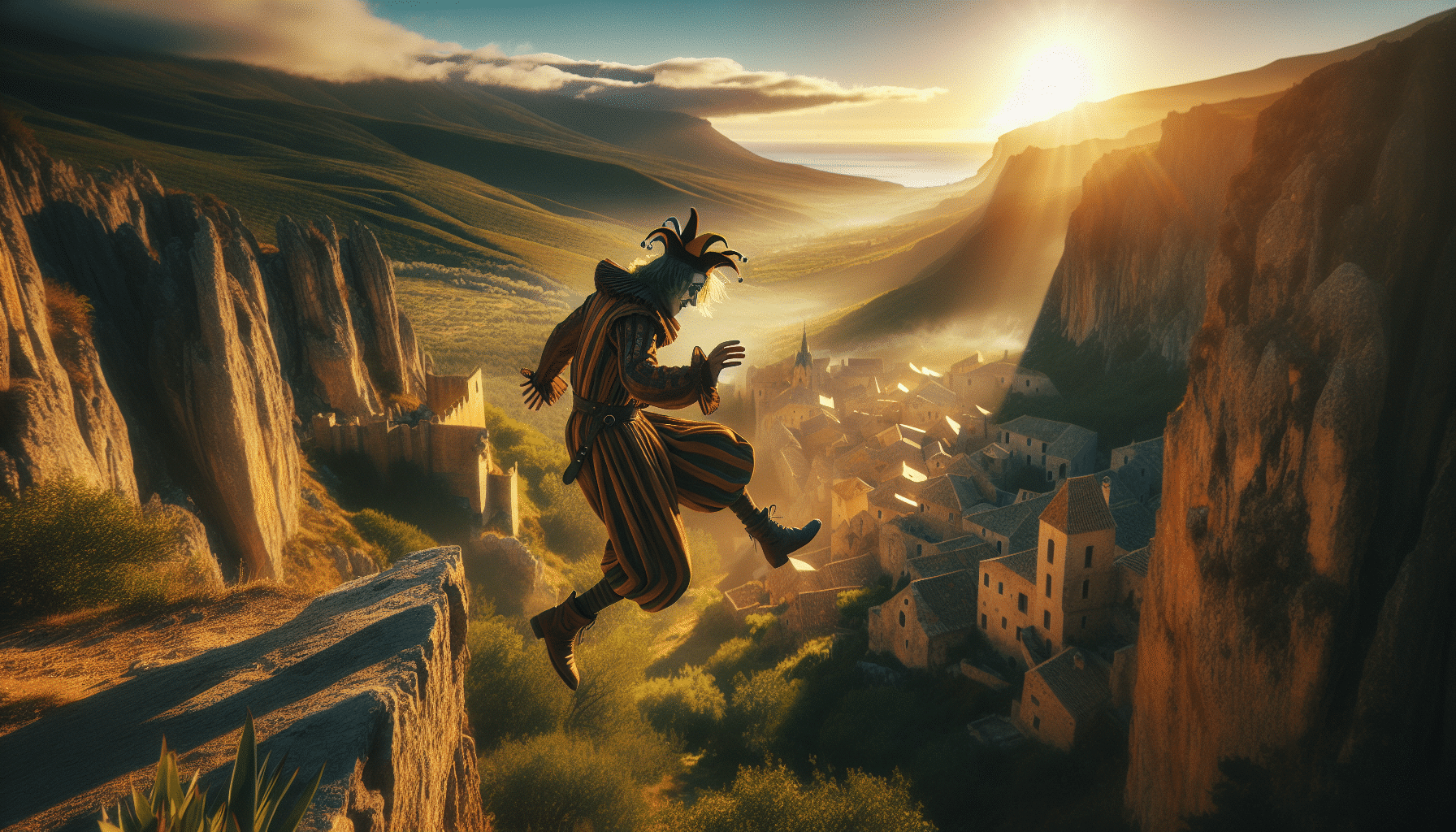
As you delve into the rich tapestry of tarot’s history, consider how its symbolism and uses evolved as it spread from Italy to other parts of Europe. The journey of tarot is a compelling story of cultural exchange, where card games became a canvas for the intermingling of ideas and traditions. In Italy, the tarot started as a game known as tarocchi, but as it traveled, each culture embraced and transformed it, infusing it with local artistry and perspectives.
From Italy, the fascination with tarot cards moved to France, where they took on new layers of mysticism. In France, the tarot was not only for play; it began to be seen as a tool for divination. This change in perception was crucial, as it shifted tarot’s purpose from entertainment to enlightenment.
This table captures the essence of tarot’s emotional voyage:
| Country | Transformation | Emotional Impact |
|---|---|---|
| Italy | Birth of Tarot | Wonder |
| France | Mystical Shift | Intrigue |
| England | Occult Adoption | Fascination |
In England, the tarot’s adoption by occultists such as the Hermetic Order of the Golden Dawn expanded its mystical associations. You’re not just tracing a path across a map; you’re following an emotional and spiritual journey that has deeply influenced our collective consciousness.
Learn even more secrets of the history of tarot here…
Esoteric Associations Emerge
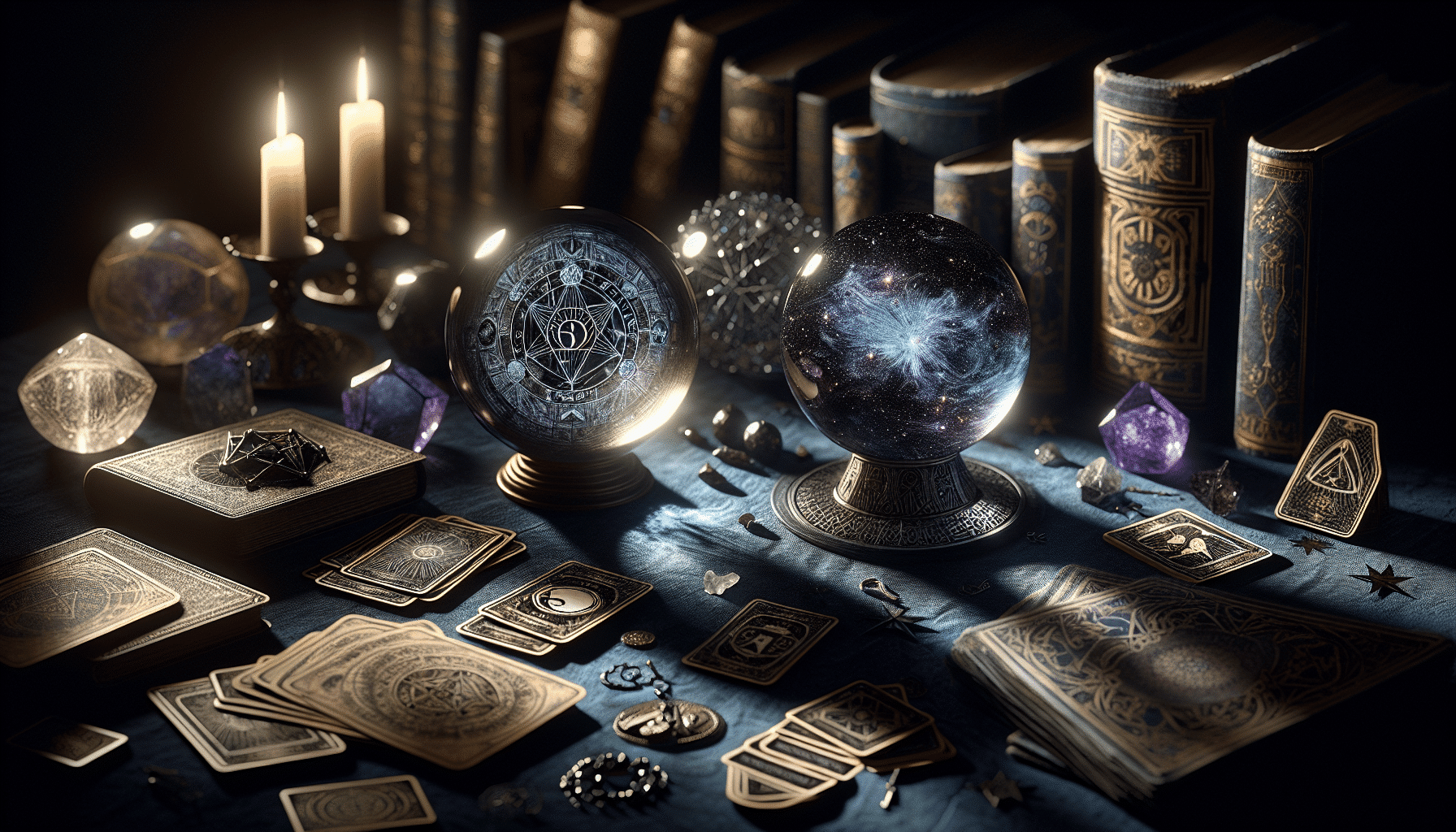
As you explore tarot’s history, you’ll find that its esoteric ties didn’t surface until the 18th century. This is when tarot cards gained new layers of symbolism, intertwining deeply with mysticism and the occult.
These developments transformed the cards from simple playing pieces to powerful tools for divination.
The Effects of the Occult Link on the Transition of Tarot Through Centuries
To unravel the esoteric associations of tarot, you must delve into the occult revival of the 18th and 19th centuries. This period saw a surge in mystical practices, theosophy, hermeticism, divination debates, rationalism vs. spiritualism, and tarot’s role as a divinatory tool or mere game.
By exploring the rise of these movements, you’ll understand how tarot cards were reframed from simple playing cards to powerful tools for introspection and prophecy. The interplay between rational thought and mysticism created a fertile ground for tarot’s transformation.
You’ll find that the cards became imbued with symbolism and meaning, reflecting a deeper search for knowledge beyond the tangible world.
Symbolism Deepens Mysticism
Amid the flourishing of esoteric traditions, you’ll notice how tarot imagery began to mirror the complex ideologies of the time, becoming steeped in a myriad of symbols and archetypes. These mystical archetypes are loaded with deep esoteric meanings that can shift your intuitive interpretations, offering a more profound connection to the cards.
As you delve deeper, you’ll find that each tarot card serves as a gateway to hidden knowledge, with symbols that resonate with the collective unconscious. This intricate layering of meaning allows for a nuanced understanding, transforming a simple card reading into a rich tapestry of insight.
The tarot’s symbols are keys to unlock the door to your inner wisdom, guiding you to revelations that are as personal as they’re universal.
The French Tarot Evolution
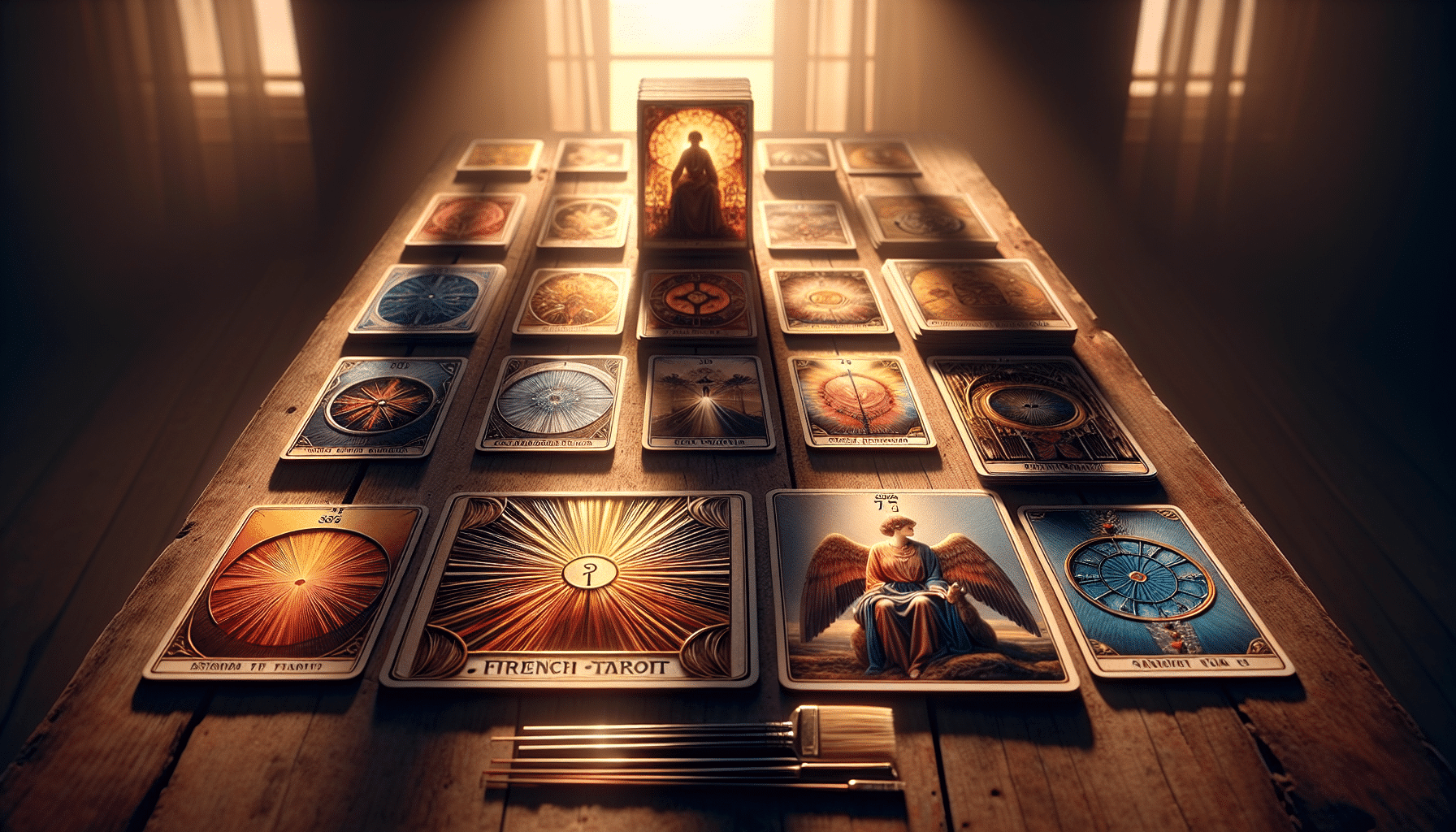
While you explore the rich tapestry of Tarot’s history, you’ll find that the French evolution of these cards marked a significant turn in their artistic and practical application. The French influence is undeniable when you consider the shift in imagery and symbolism that occurred during the 17th and 18th centuries, which profoundly impacted modern divination practices.
French Tarot Evolution:
Artistic Developments:
- Introduction of ornate back designs
-
Standardization of the iconic ‘Tarot de Marseille’
Practical Shifts:
- The cards became tools for divination beyond game play
- Adaptation of card meanings to align with esoteric systems
As you delve deeper, you’ll notice that the French tarot decks weren’t only beautiful but also carried new interpretations and associations that enriched the divinatory experience. The Tarot de Marseille, in particular, with its distinct imagery and structure, became the foundation for the tarot cards used in modern divination. It’s this period of transformation under the French influence that bridged the gap between the tarot’s mystical roots and its contemporary use as a tool for personal insight and reflection.
Victorian Era and Occultism
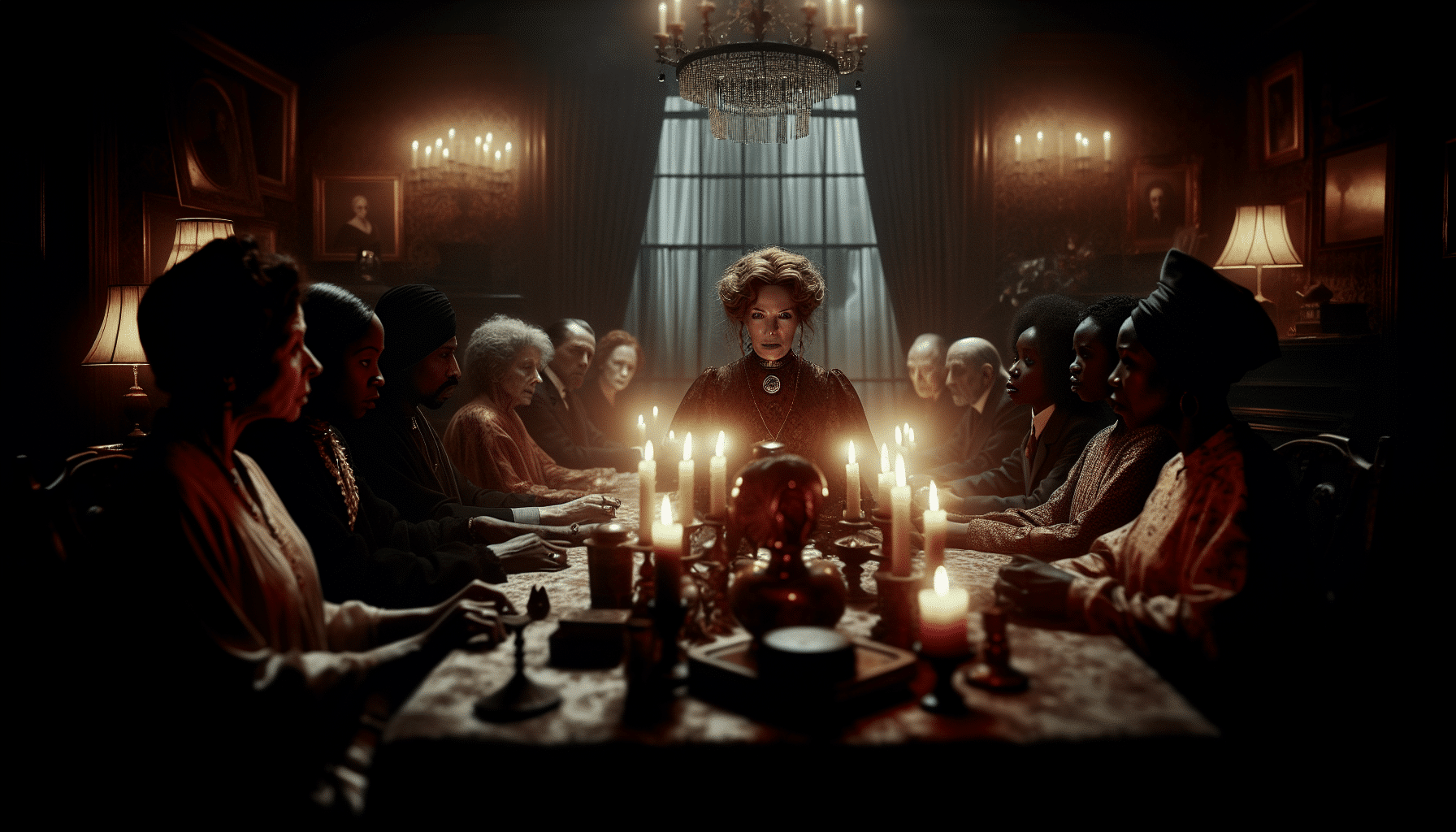
Your investigation into Tarot’s past leads you to the Victorian era’s embrace of occultism, which further molded the cards’ mystical significance. During this time, a spiritualism surge swept through society, with individuals seeking to connect with the beyond. Victorian divination practices, including Tarot, became increasingly popular as tools for personal guidance and mystical exploration.
Imagine the dimly lit parlors and the velvet-draped tables where Tarot readings unfolded. Here’s a table to create imagery of the era:
| Victorian Setting | Tarot Rituals | Occult Significance |
|---|---|---|
| Gaslamp glow | Shuffling cards | Gateway to the spiritual realm |
| Flocked wallpaper | Spreading the deck | Revealing life’s mysteries |
| Lace curtains | Selecting a card | Symbols of fate and destiny |
| Tasseled tablecloths | Contemplating imagery | Manifestations of esoteric wisdom |
You’ll find that the Victorian era added a layer of complexity and romance to Tarot’s narrative. The cards were no longer just for play; they became a bridge to the unseen, an intimate dance with the arcane. Embrace this historical tapestry as you explore how Tarot decks transformed under the influence of Victorian occultism, reflecting a society enthralled by the mystical unknown.
Rider-Waite-Smith Deck Revolution
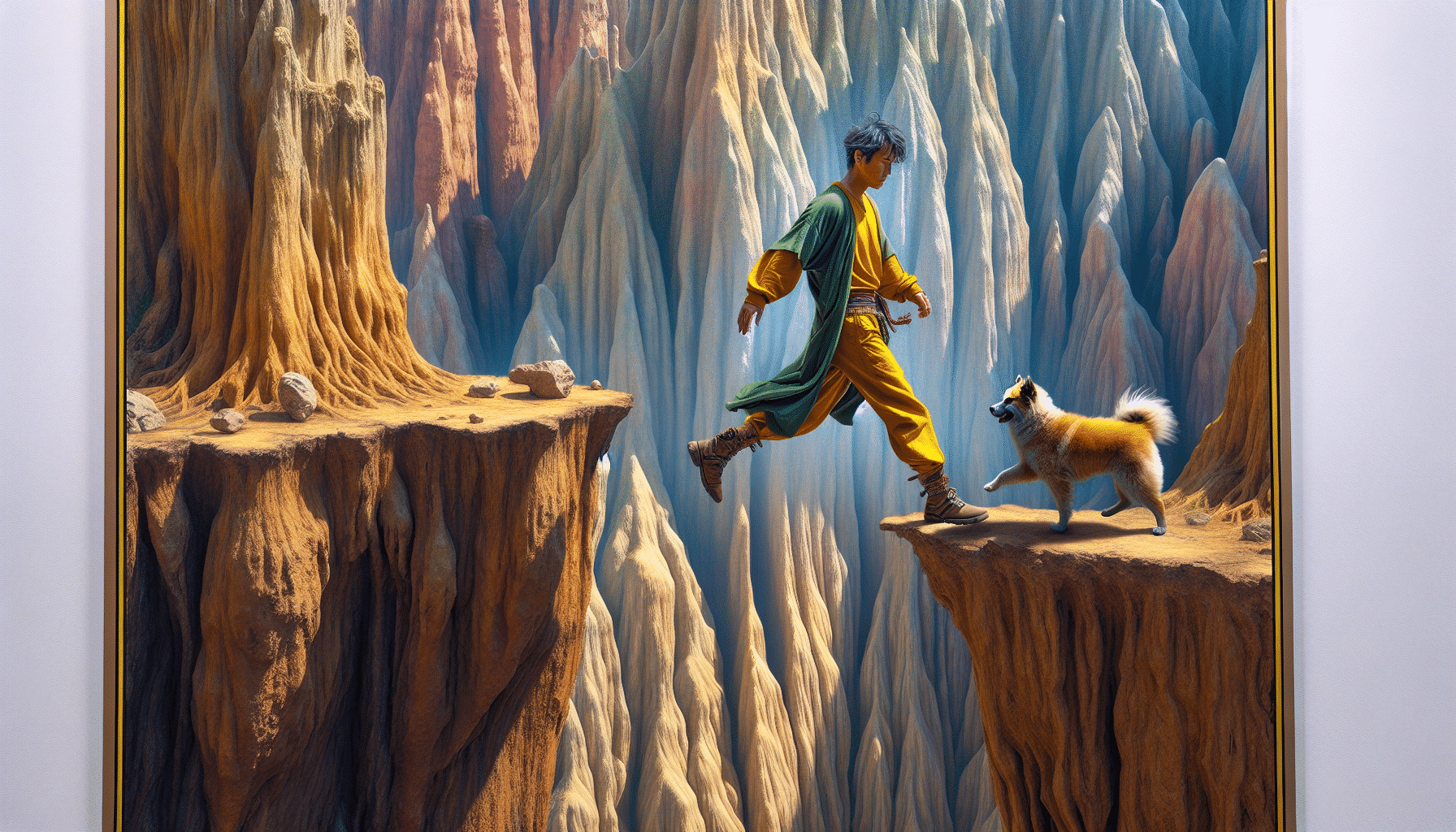
As you delve into the evolution of Tarot, it’s essential to recognize how the Rider-Waite-Smith deck revolutionized Tarot readings at the turn of the 20th century. This iconic deck brought about deck diversity and laid the groundwork for modern interpretations that continue to influence Tarot enthusiasts today.
Key Contributions of the Rider-Waite-Smith Deck:
- Visual Symbolism: Introduced detailed imagery on all cards, allowing intuitive readings.
- Accessibility: Shifted Tarot from occult circles to the mainstream public.
The Rider-Waite-Smith deck’s rich, illustrative quality meant that each card told a story, not just the Major Arcana but the Minor Arcana as well. This was a significant departure from previous decks where the Minor Arcana resembled today’s playing cards with pattern-based designs rather than pictorial scenes.
Impact on Modern Tarot:
- Inspirational Source: Spurred the creation of numerous decks reflecting diverse cultures and philosophies.
- Interpretative Depth: Enabled readers to derive personal and contemporary meanings from the cards.
You’re now more aware of how the Rider-Waite-Smith deck has shaped the Tarot’s journey. Its legacy is visible in the vast array of decks available, each offering a unique lens through which the ancient wisdom of Tarot can be interpreted for modern life.
Tarot During the World Wars
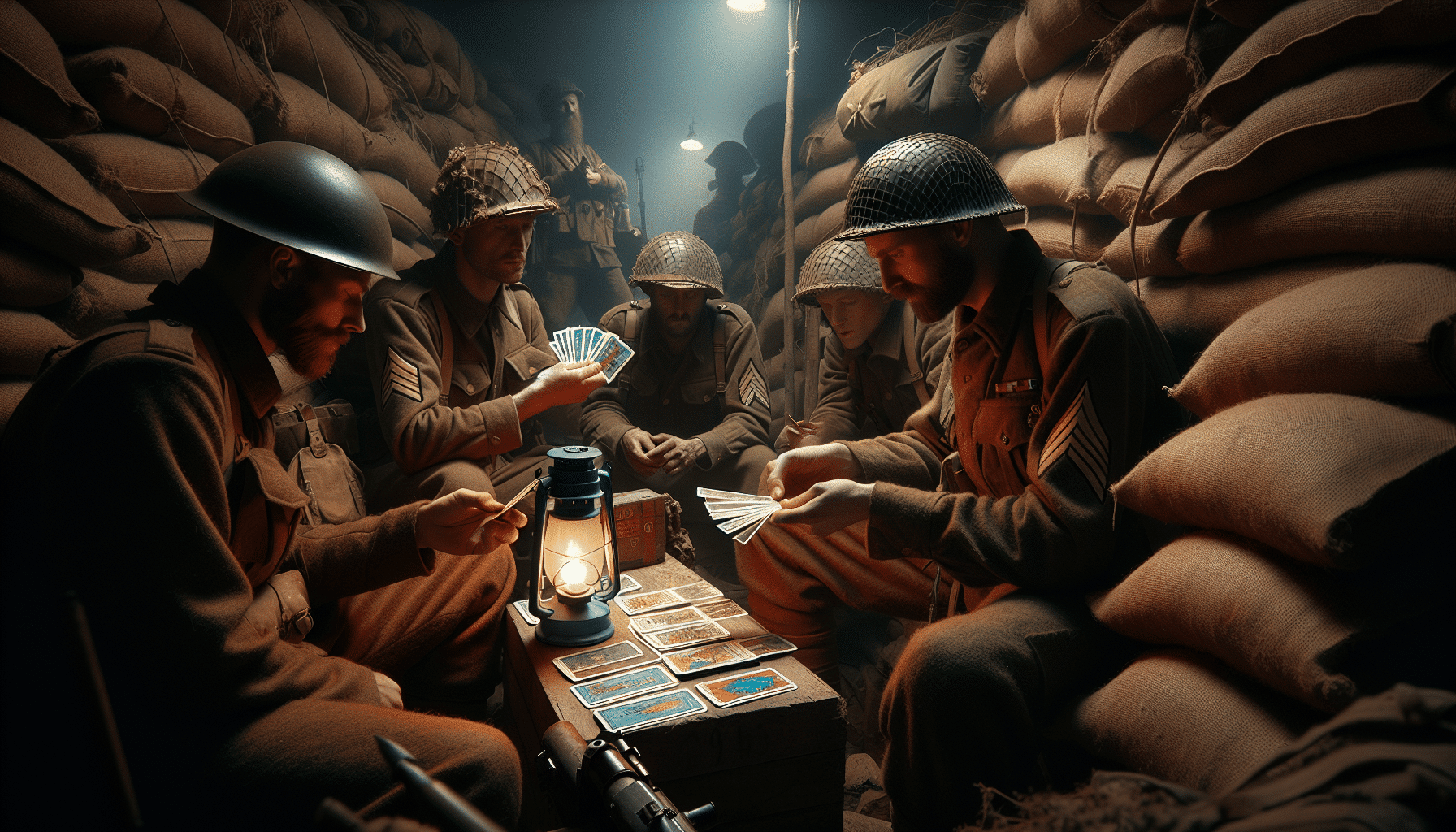
Reflecting on the Rider-Waite-Smith deck’s influence, you’ll find that Tarot’s role and interpretation underwent further evolution during the tumultuous era of the World Wars. The chaos and uncertainty of these times saw Tarot’s use diversify, becoming a tool for personal introspection and, quite interestingly, a form of war propaganda.
For many soldiers, Tarot offered a solace from the grim realities of war. The cards were a means to seek comfort, guidance, and a sense of control over their fates amidst the chaos. The imagery of the Tarot could provide a psychological escape or a momentary peace, acting as a Soldiers’ solace in the trenches and on the battlefields.
During this era, governments also saw the potential of Tarot as a medium for war propaganda. The symbolic nature of the cards allowed for reinterpretation to fit narratives that could boost morale or demonize the enemy.
Here’s a brief overview of Tarot’s multifaceted role during the World Wars:
| Era | Use by Soldiers | Use in Propaganda |
|---|---|---|
| WWI | Personal guidance | Boosting morale |
| Divination practices | Encouraging enlistment | |
| WWII | Coping mechanism | Psychological warfare |
| Form of entertainment | Symbolic messages |
As you delve into this complex history, you’ll gain a deeper appreciation for the adaptability and enduring relevance of Tarot throughout times of great upheaval.
Tarot’s New Age Rebirth
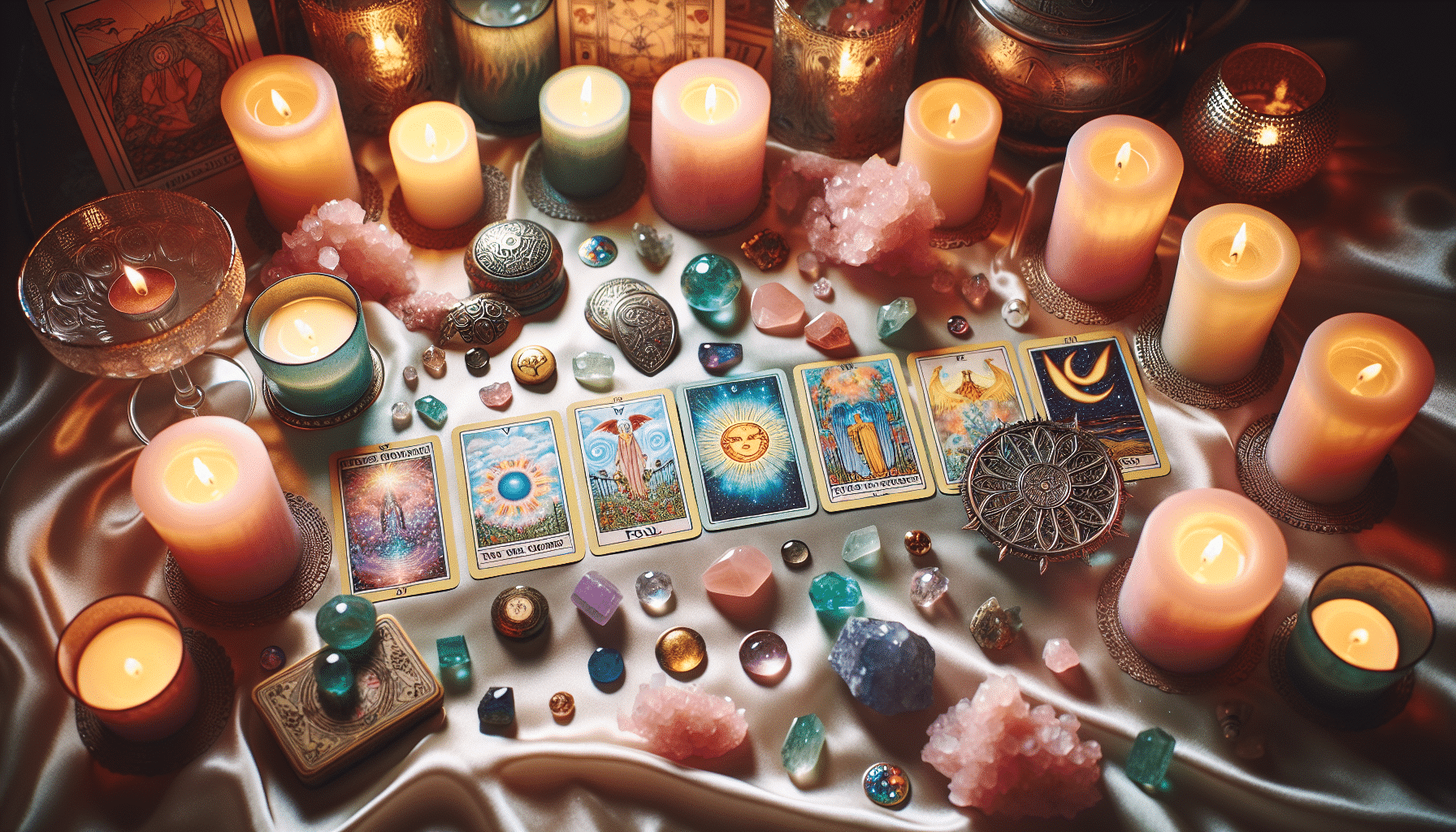
Emerging from the shadows of global conflict, you’ll notice that the Tarot experienced a profound resurgence during the New Age movement, marking a period of redefined spiritual and metaphysical significance. This era saw a remarkable evolution in:
Tarot deck artistry
-
Diversity of themes: Artists began creating decks that ranged from medieval imagery to modern and abstract art, reflecting a wide spectrum of cultural and philosophical ideas.
-
Personal expression: Tarot cards became canvases for individual creativity, infusing personal symbolism and storytelling into the traditional archetypes.
Modern psychology integration
-
Archetypal resonance: Psychologists like Carl Jung emphasized the synchronicity and psychological archetypes found in Tarot, enhancing its legitimacy as a tool for introspection.
-
Therapeutic tool: Tarot readings started to be viewed as a means of uncovering subconscious thoughts and feelings, often used in tandem with more conventional therapeutic techniques.
As you delve deeper into the history of Tarot, you’ll appreciate how these developments have transformed it into a versatile instrument for self-discovery and artistic expression.
The New Age movement didn’t just revive Tarot; it breathed new life into its bones, making it more accessible and relevant than ever.
Digital Age Tarot Adaptations

Exploring digital platforms, you’ll find that Tarot’s transition into the digital age has revolutionized accessibility and diversity of readings. Nowadays, you don’t have to seek a physical deck or a local reader; a plethora of websites and apps offer virtual readings at your fingertips. This shift isn’t just about convenience; it’s about connection. Online communities have sprung up, uniting Tarot enthusiasts from all corners of the globe. Here, you can exchange insights, share spreads, and deepen your understanding of Tarot’s rich symbolism.
Digital Tarot decks are incredibly varied, featuring traditional and contemporary artwork, which means you’re sure to find a deck that resonates with you personally. Plus, you’re not limited to one – you can explore different decks without the physical space constraints. Interactive apps guide you through readings, explaining card meanings and offering interpretations that mightn’t have occurred to you.
The digital age has also democratized learning. There’s a wealth of resources – forums, blogs, online courses – dedicated to Tarot. Whether you’re a beginner seeking the basics or an experienced reader looking to refine your skills, you have access to knowledge that was once much harder to come by. Digital Tarot is a testament to the timeless appeal of these mystical cards.
Contemporary Tarot Trends
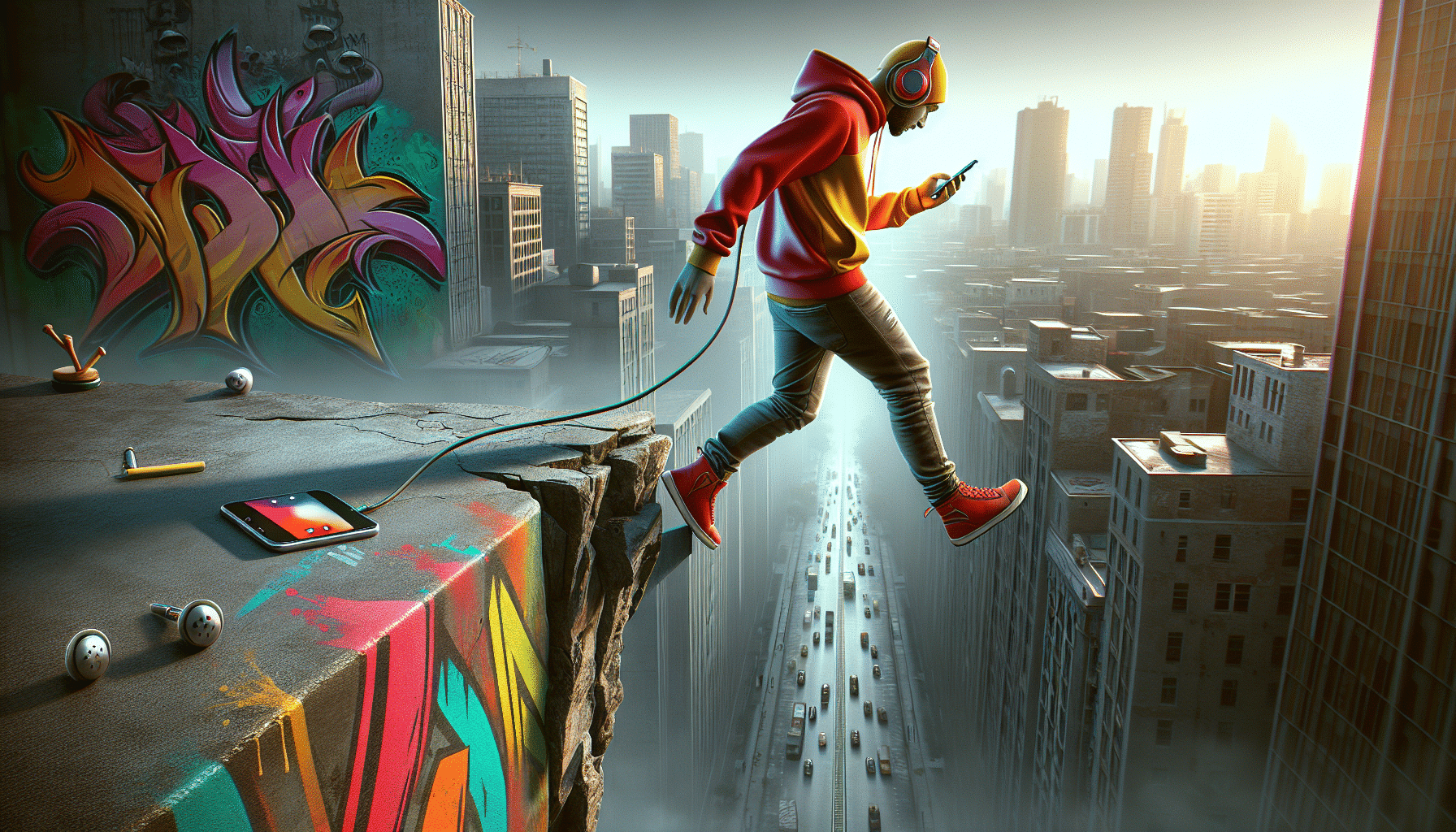
As you navigate the current landscape, the Tarot’s evolution is evident in the surge of themed decks catering to a diversity of interests and backgrounds. You’ll find that contemporary trends reflect both a respect for tradition and a push towards inclusivity and digital integration.
Themed Decks
- Pop Culture: Decks inspired by movies, TV shows, and books
-
Inclusive Decks: Artwork celebrating diverse representation across races, cultures, and the LGBTQ+ community
Digital Access
- Tarot Apps: Convenient, portable, and often equipped with tutorials for beginners
- Online Communities: Forums and social media groups for Tarot enthusiasts to share interpretations and readings
Contemporary creators are designing Tarot decks that not only provide diverse representation but also resonate with personal identities and contemporary issues. This variety invites you to find a deck that speaks to your unique journey.
Tarot apps have also become a significant trend, offering an array of features from daily card pulls to full readings. They make learning and consulting the Tarot more accessible than ever before, ensuring that the wisdom of the cards can be at your fingertips anytime, anywhere.
As you explore these modern expressions of an ancient practice, you’re participating in the ongoing story of Tarot’s transformation.
Conclusion
As you’ve voyaged through tarot’s rich tapestry, you’ve witnessed its evolution from humble playing cards to mystical tools. From medieval symbolism to digital decks, tarot’s story is as layered as the spreads it inspires.
Don’t let the anachronism throw you – whether you’re seeking Renaissance wisdom through an app or pulling a physical card, the magic of tarot transcends time. Embrace its transformative journey, for in each card lies a universe of meaning, eternally awaiting your interpretation.
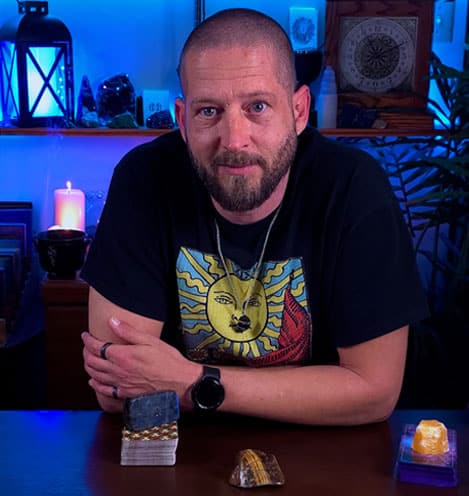
About The Author – Allen Hill
Allen Hill, the force behind Unknown Truth Tarot, has a YouTube following 6-times bigger than the population of his hometown, Miamisburg, Ohio. From his spiritually rich blog on Tarot and crystals to his role as CEO of The Unknown Truth Tarot Metaphysical Shop, Allen’s passion for the metaphysical shines through.
A master Tarot reader and “crystal junkie,” Allen is also a devoted dad to Dylan, 10, and Destiny, 24. When he’s not immersed in the world of Tarot and crystals, he enjoys poker and video gaming sessions, often humorously outplayed by Dylan.
Follow Allen on Twitter, Instagram, Facebook, TikTok, and subscribe to his Unknown Truth Tarot YouTube channel to join him on a journey of spiritual growth and self-discovery.

